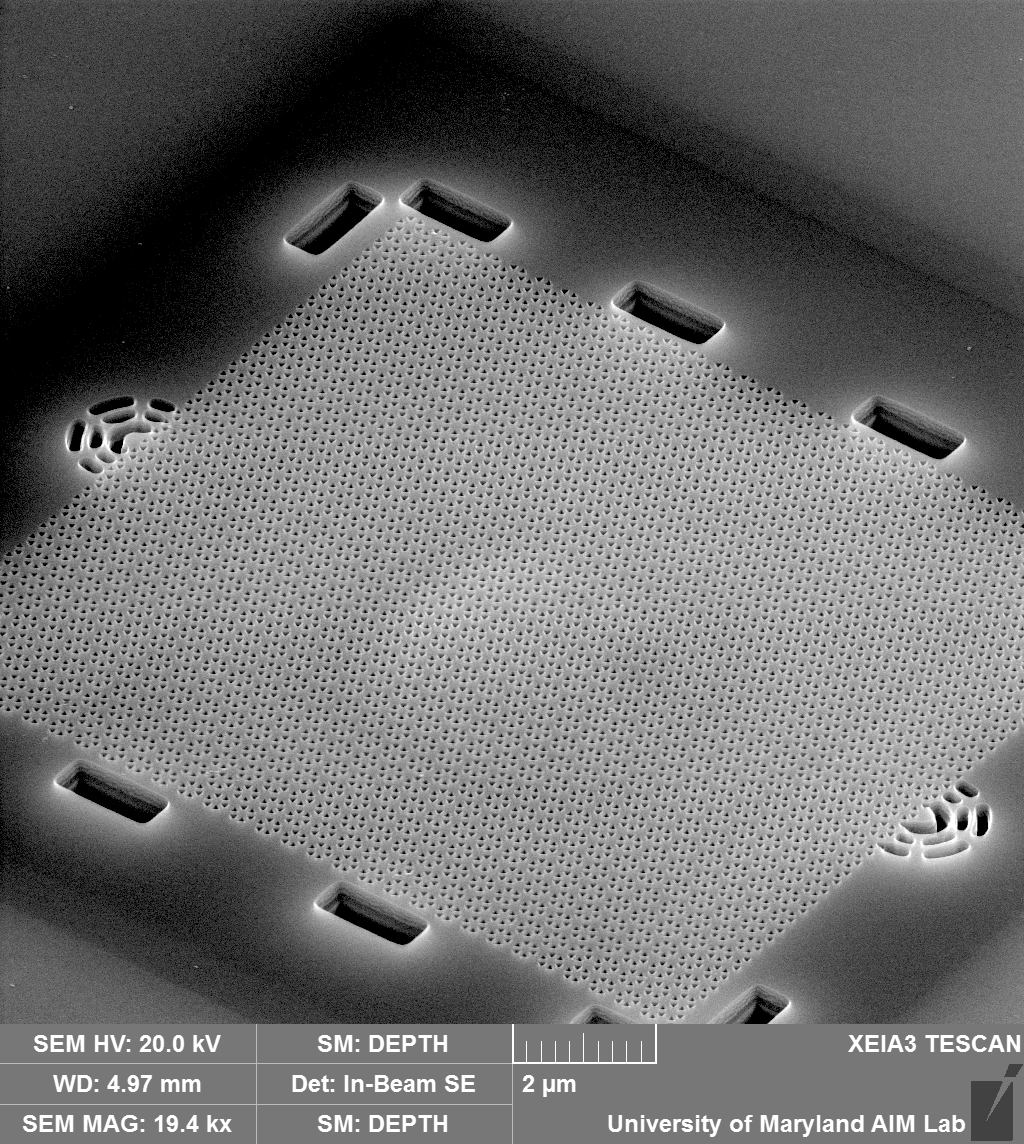A newly designed pattern for photonic crystals, developed with the help of University of Maryland professors, has brought researchers one step closer to developing quantum computers accessible to the general public.
Researchers at the Joint Quantum Institute, which includes scientists from this university’s physics department along with other leading institutions in quantum research, created the crystal design and implemented it on a photonic chip.
Photons are the smallest amount of light that exists, said Mohammad Hafezi, a professor for the electrical and computer engineering and physics department.
“The sun emits many photons for example, but if we chop that stream of light into little pieces, the smallest individual piece is a photon,” said Hafezi, who also worked on this project. “That example compares to a water hose that shoots out a whole stream of water — the smallest unit from that is a water molecule, so a photon is the same but with light.”
[Read more: The University of Maryland announces opening of quantum systems research center]
Photonic crystals have thousands of holes carved into them by scientists, which causes light to interact. Researchers use different hole patterns in the crystal to change the way that light — in the form of photons — bends and bounces through the crystal, according to a Joint Quantum Institute press release. In the new chip, researchers etch out thousands of triangular holes that resemble a bee’s honeycomb, the release added.
This design causes a single photon to be emitted through the crystal, instead of the normal large mass of photons are released with fiber optics — which is how long-distance phone calls, cable television and the internet work Hafezi said.
The project started about a year and a half ago, said co-author Sabyasachi Barik, a graduate student in the physics department. All of the research was conducted at the Maryland NanoCenter in the Kim Engineering Building at this university.
The use of single photons is important for the future of communication systems, Hafezi said. Currently, technology giants such as Google are in the process of creating quantum computers. These computers will have the ability to calculate large numbers and chemical reactions that the type of computers used now aren’t able to do. The chip’s design makes it possible for the transfer of photons between quantum computers to occur without any losses.
It also creates a more secure communication system, Hafezi said, by reducing the threat of hacks, due to the use of one photon instead of hundreds at a time. This is because information from the system is embedded into the photons when sent to another computer, and when that information is only embedded into a single particle instead of a mass of them, it is harder to infiltrate.
[Read more: A team of University of Maryland researchers has developed the world’s first time crystals]
“Definitely quantum mechanics is the next step in physics,” said Edward Hennessey, a senior chemical engineering major. “Regular computers work with binary code — 0’s and 1’s — and quantum computers are able to work in more different directions than just those two states, and that’s the next step of energy we can use in the future to advance technology.”
While quantum computers are the future of communication, one challenge at this point is to route the quantum information without any losses from one system to another. The new chip is able to do that, Barik said. The next step in research is to continue testing this, and he estimated it would take about one to two years to do so.
“Our success motivates us to do more,” Hafezi said. “We need to go further with this research — there is never a sense of accomplishment in science.”



